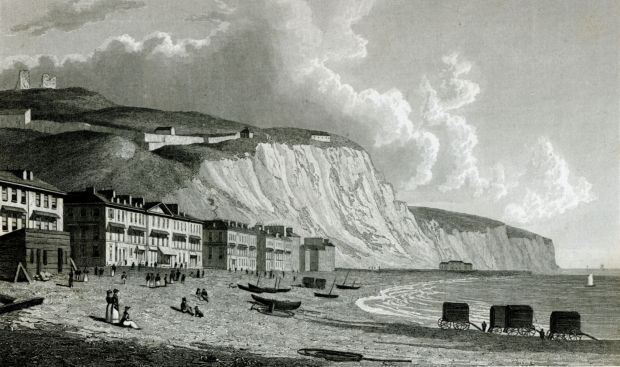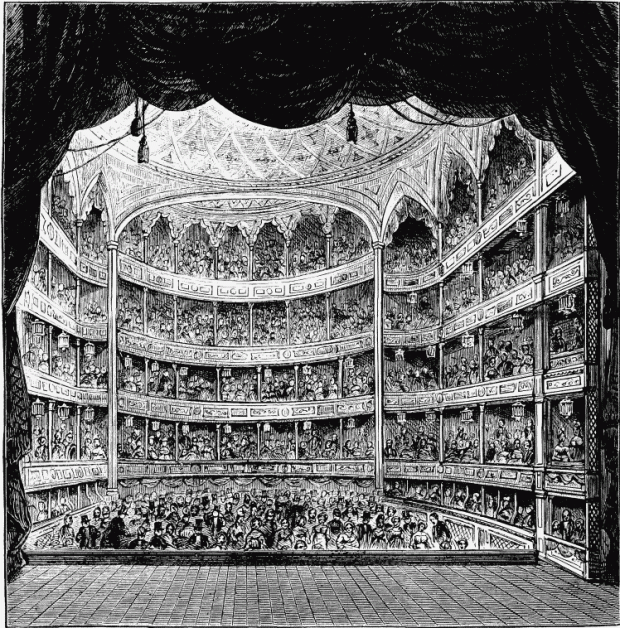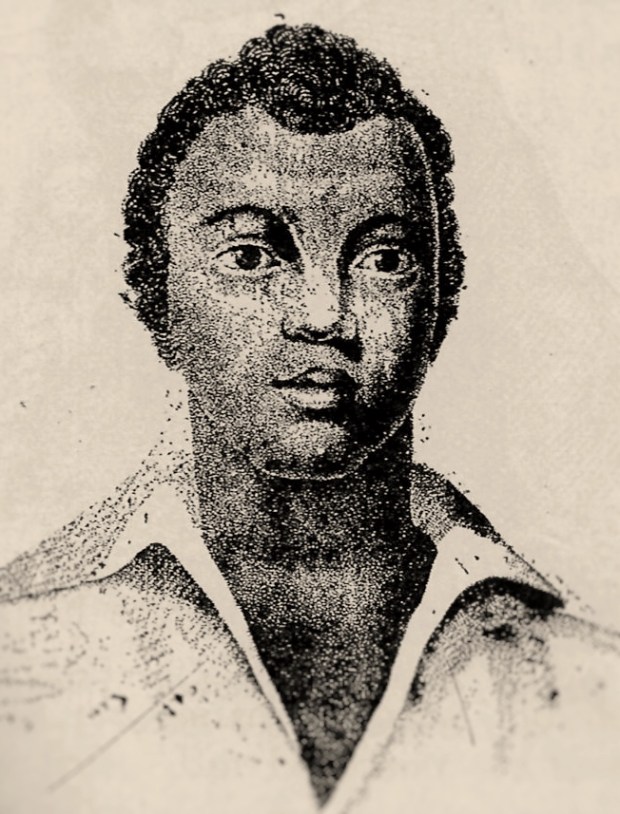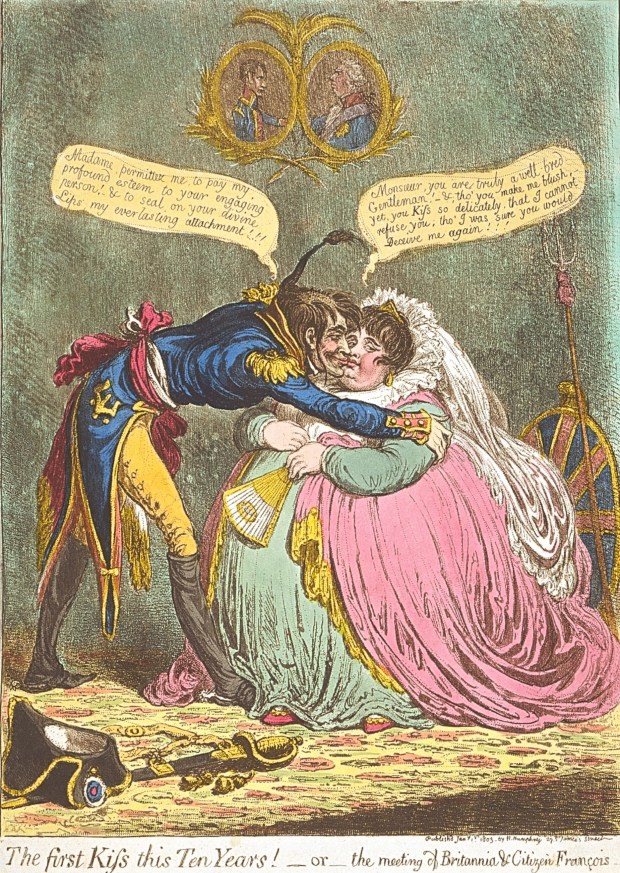(This is Part Two of Lord Camelford’s story. For Part One, please click here)
*
Despite a notorious incident in which he’d assaulted his former captain, George Vancouver on Mayfair’s Conduit Street, Thomas Pitt the 2nd Baron of Camelford was permitted to remain in the navy.

Thomas Pitt, 2nd Baron Camelford in his late 20s
Quickly rising through the ranks, he was made commander of HMS Favourite aged just 22- a controversial choice given it bypassed Camelford’s senior, Charles Peterson.
Although Peterson himself was soon granted command of HMS Perdrix a bitter rivalry festered between the two.
This came to a head when both ships were docked in Antigua and Camelford gave an order to Peterson who, claiming it was not conducive to his own vessel, refused to obey.

Antigua in the early 19th century
This resulted in a tense standoff, during which Camelford asked, “Do you still persist in not obeying my orders?” To which Peterson replied, “Yes my lord. I do persist.”
With that, Camelford stepped forward and shot Peterson dead at point-blank range.
Despite this cold-blooded killing, Camelford was acquitted.
*
When he returned to London in autumn 1798 Lord Camelford conjured up a plot in which he planned to personally assassinate the nation’s arch enemy, Napoleon Bonaparte.

Portrait of Napoleon Bonaparte in his early 20s
Packing a brace of pistols, a dagger and a “Letter of introduction to the French” Lord Camelford caught a night coach to Dover where he chartered a boat, comically claiming he had a collection of fine watches and fabrics he intended to sell to potential French bargain hunters.

Dover as it appeared in Lord Camelford’s time
As Britain was at war with France during this period any attempt to cross the Channel was punishable by death.
Fully aware of this, the boat’s skipper instead took Camelford straight to the authorities who, once again, set the Lord free, this time claiming “His only motive had been to render a service to his country.”
Nevertheless, Camelford was disgusted and quit the navy in protest.
*
Now a man of leisure, Lord Camelford once again took to menacing the people of London.
In May 1799 he was one of “Several gentleman intoxicated with liquor” who instigated a riot at the Theatre Royal, Drury Lane.
During the brawl, boxes, doors and windows were splintered and smashed and Camelford punched and kicked a man down a flight of stairs.
As a result, he had to cough up £500 in damages- about £22,000 in today’s money.

Interior of the Theatre Royal Drury Lane, 1804 (image: British History.ac.uk)
*
Around this time Camelford also employed a servant; a black American named Bill Richmond.

Bill Richmond
Bill had been born a slave on Staten Island, New York but made it to England in 1777 where he rose to become a celebrated bareknuckle fighter.
A known boxing fan, it’s believed Camelford encouraged Bill to teach him some moves and the two men attended a number of prize-fights together.
Bill and Lord Camelford could also be seen frequenting London’s many taverns- apparently, the pugilistic peer’s favourite ruse was to stir up drunken trouble so he could delight in watching Bill knock people spark out.

Bill Richmond in his boxing days
Bill Richmond would later go on to own a pub named the Horse and Dolphin near Leicester Square and became close friends with fellow boxer and publican, Tom Cribb.
Indeed it was in Tom’s pub on Panton Street that Bill spent his final evening before passing away at the age of 66.

Tom Cribb’s pub today, Panton Street
*
In January 1802 Britain and France announced peace with the signing of the Treaty of Amiens (a declaration which would soon transpire to be short-lived).

A contemporary cartoon satirising the Treaty of Amiens
Properties across London were lit in celebration but Camelford’s residence on the junction of Oxford Street and Park Lane remained resolutely dark; no doubt due to his cynicism and the fact he’d been prevented from having a crack at bumping off Napoleon.
Consequently a mob gathered outside and began breaking Camelford’s windows in protest at his lack of participation in the festivities.
Unperturbed, Lord Camelford armed himself with a club and stepped outside to tackle the crowd, beating them back single-handed until they were subdued.
*
In March 1804 Camelford became embroiled in a spat over a woman with his former friend, Captain Best.
After a charged meeting at a coffee house on Oxford Street, Camelford refused to withdraw insulting comments that he’d made.
Only one course of action therefore was left to the two rogues: a duel which was to be held in the grounds of Holland House.
Camelford knew his old pal was a far better shot- but backing down would mean cowardice and that was not an option.

Holland House as it appeared in the late 19th century- the building was largely destroyed during WWII
When the two turned to fire, Camelford missed but Best’s bullet found its mark, puncturing his foe’s lung. The bullet also destroyed part of Camelford’s spine, paralysing him.

With the score settled, Captain Best rushed to his old friend and tried to comfort him.
As the pair gripped hands, Lord Camelford assured the victor, “You have killed me, but I freely forgive you.”
*
Camelford spent the next three days in agony, during which time he managed to compose his will. In it, he stated that his impending death was his own fault; lost “In a contest of my own seeking” and that nobody was to take proceedings against his antagonist.
On March 10th 1804 Thomas Pitt, the 2nd Lord of Camelford finally succumbed to his injuries. He was 29 years old and had no heir, meaning the Camelford peerage died with him.
*
Following his death, Lord Camelford’s body was embalmed and placed in a crypt beneath St Anne’s Church in Soho.

The modern day entrance to St Anne’s Church, Soho on Dean Street
This was intended to be a temporary measure: in his will, Lord Camelford had stated his desire to be buried on the shores of Lake St. Pierre in Switzerland- a place that had been dear to him since childhood- and his body was to lay in St Anne’s only until transport to The Continent could be arranged.
However, whilst stored in the crypt the corpse inexplicably vanished…
To this day, the fate and current whereabouts of the thuggish Lord’s body remains a complete mystery.
***











A nasty man by any account, and an irredeemable thug too. But he died well, there’s no denying that. 🙂
Best wishes, Pete.
Thanks Pete! Lord Camelford was a bit of a handful for sure. Apparently he did give quite a bit of money to charity in his time too though; perhaps there was some good lurking in there 🙂
Or guilt! 🙂
Sir, after reading your esteemed articles for a number of years – and recently enjoying your pieces on Lord Camelford and George Downing in Taxi magazine – would you not, in your most humble opinion, agree that it could be time for a new English Civil War? I believe that the present royal family would do a better job of running the country than any of today’s politicians. Heads on spikes in Whitehall, Oh Yes…
Oh, and I wonder, perchance, if the author is familiar with “The English Civil War”, a phonograph recording by 1970s beat group, The Clash?
Of course; top tune!
Camelford was a life-long friend of Sir Robert Barrie who also served on George Vancouver’s voyage—Robert gave a different accounting of how George Vancouver, not being a man of means as was Camelford, had become ready to set upon him as an example — At the end of his life, Sir Robert Barrie was with his friend and comrade–and it is noted that some of Camelford’s last words were of the Nootka tribe from the Pacific Northwest.. as well as extracting a large promise from Robert Barrie that he was not to gamble again and his dues would be paid. From that point on after Camelford’s death, Robert Barrie never gambled again. I look at Camelford with a slightly different view.. he was beaten severely by Vancouver with a Cat ‘o Nine Tails.. for a small infraction that was not deserved.. This was also echoed by Robert Barrie to his uncle Admiral Alan Gardner and to many others– thus those of authority did not give Vancouver the adulation that he so desired. And in terms of Camelford flogging Vancouver on Conduit Street… I would say that if you had felt the lashes of the Cat, that you didn’t feel you deserved, and others onboard believed the same, you’d be ready to beat the holy water out of Vancouver yourself